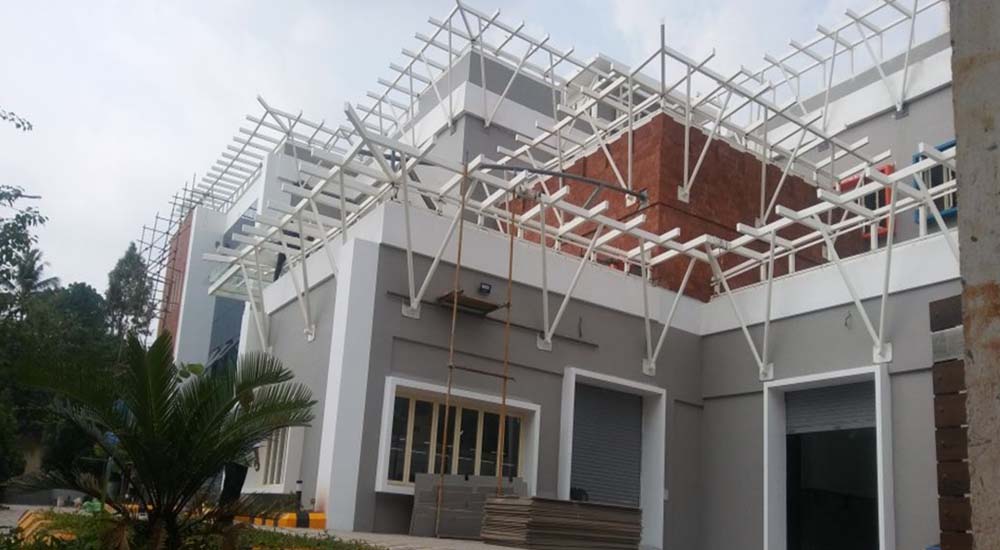In the world of construction, pre-engineered buildings (PEBs) have emerged as a game-changer for industries, commercial enterprises, and even residential projects. These structures, designed off-site and assembled on-location, promise speed, efficiency, and cost savings. But like any innovation, they come with their own set of trade-offs. Let’s look into the advantages and disadvantages of pre-engineered buildings and explore why partnering with the best pre-engineered builders matters more than you might think.
What Are Pre-Engineered Buildings?
Pre-engineered buildings are structures fabricated in factories using standardized components. Unlike traditional construction, where materials are cut and assembled on-site, PEBs rely on pre-designed steel frames, walls, and roofing systems tailored to a project’s specifications. This method streamlines the building process, reduces waste, and often slashes timelines. From warehouses and factories to schools and aircraft hangars, PEBs are reshaping how we think about construction.
But are they the right choice for every project? Let’s break it down.
Advantages
- Speed of Construction
Time is money, and nowhere is this truer than in construction. PEBs excel here. Since components are prefabricated in controlled factory environments, weather delays and on-site errors are minimized. A skilled team can erect a PEB in weeks, not months. For businesses needing rapid expansion (think logistics hubs or manufacturing units), this speed is invaluable.
- Cost-Effectiveness
PEBs are often cheaper than traditional buildings. Standardized designs reduce material waste, and bulk purchasing of steel lowers costs. Labor expenses also drop, as fewer workers are needed for assembly. For budget-conscious projects like agricultural warehouses or small-scale factories, these savings can make or break feasibility.
However, cost isn’t just about upfront expenses. PEBs’ durability, thanks to corrosion-resistant steel and engineering, translates to lower maintenance costs over decades.
- Design Flexibility
Contrary to the myth that PEBs are “one-size-fits-all,” modern systems allow impressive customization. Builders can adjust spans, heights, and layouts to accommodate cranes, machinery, or even intricate architectural features.
- Durability and Safety
Steel, the backbone of PEBs, is inherently strong and resistant to pests, fire, and extreme weather. When engineered correctly, these buildings withstand cyclones, heavy rains, and seismic activity, critical in disaster-prone regions like Kerala. Reputed builders also integrate advanced safety features, from fire-resistant insulation to lightning protection systems.
- Sustainability
PEBs are eco-friendly by design. Steel is recyclable, and precision manufacturing reduces material waste. Builders can also incorporate energy-efficient elements like insulated panels, skylights, and solar-ready roofs. For companies aiming to meet green certifications, PEBs offer a clear path.
Disadvantages of Pre-Engineered Buildings
- Limited Aesthetic Appeal
While PEBs have come a long way, they still lag behind traditional buildings in visual sophistication. Most industrial PEBs prioritize function over form, resulting in boxy, utilitarian designs. For projects where aesthetics matter—luxury resorts, high-end retail spaces they may fall short unless paired with custom cladding or facades.
- Transportation and Space Challenges
PEB components are manufactured off-site and transported to the location. For remote areas with poor road access, this can pose logistical nightmares. Oversized beams or panels might require special permits or equipment, adding to costs. Additionally, sites with limited space for staging and assembly may face delays.
- Perception Issues
Many still associate PEBs with “temporary” structures like storage sheds or roadside stalls. Convincing clients to use them for permanent projects (e.g., schools, offices) requires education. This stigma is fading as more landmark projects like Cochin Shipyard’s 70,000 sq.ft. assembly unit showcase PEBs’ potential, but it remains a hurdle.
- Customization Limits
While PEBs are flexible, radical deviations from standard designs can erase cost and time savings. A client wanting intricate domes or irregular shapes may find traditional construction more practical. However, top builders often strike a balance by blending PEB frameworks with conventional elements where needed.
- Upfront Engineering Costs
PEBs require precise engineering upfront. Any design flaws or measurement errors can derail the entire project, as components are pre-cut. This makes the initial planning phase critical—and sometimes expensive. Skimping on skilled engineers or software tools is a recipe for disaster.
When Should You Choose a Pre-Engineered Building?
PEBs shine in scenarios where speed, budget, and functionality trump ornate design:
– Industrial Projects: Factories, warehouses, cold storage.
– Commercial Spaces: Showrooms, workshops, gyms.
– Agricultural Needs: Grain storage, poultry farms.
– Emergency Infrastructure: Disaster relief shelters, temporary hospitals.
For projects requiring unique aesthetics or heritage designs, traditional methods may still prevail.
How the Best Pre-Engineered Builders Make a Difference
Consider the case of a Kochi-based gloves manufacturer. They needed a 40,000 sq.ft. factory with 20-ton crane systems and humidity control. A mediocre builder might have delivered a basic shed, but a top-tier PEB firm:
- Conducted a site-specific wind and seismic analysis.
- Integrated crane rails directly into the steel framework.
- Used insulated panels to maintain consistent indoor temperatures.
- Completed the project 30% under budget and two weeks early.
This underscores the importance of choosing experienced builders. We don’t just assemble structures, we solve problems.
Conclusion
Pre-engineered buildings are neither a magic bullet nor a compromise. They’re a tool that offers unmatched efficiency for the right projects. The advantages speed, cost savings, durability are transformative for industries racing against time and budgets. The disadvantages—limited aesthetics, logistical hurdles—are manageable with careful planning and skilled partners.
If you’re considering a PEB, invest time in selecting the best pre-engineered builders. Look for firms with a portfolio of diverse projects, in-house engineering teams, and a reputation for transparency. After all, even the strongest steel frame is only as good as the hands that assemble it.
In Kerala’s fast-growing industrial landscape, PEBs aren’t just buildings; they’re the backbone of progress. Whether you’re erecting a warehouse in Kochi or a workshop in Thrissur, understanding these pros and cons ensures you build smarter, not just faster.





